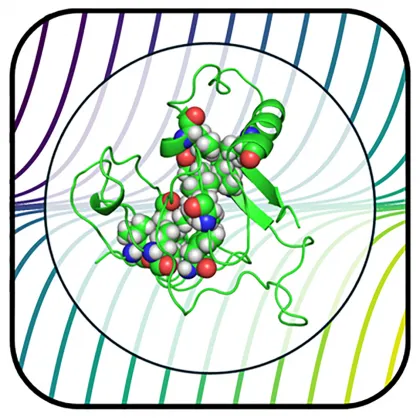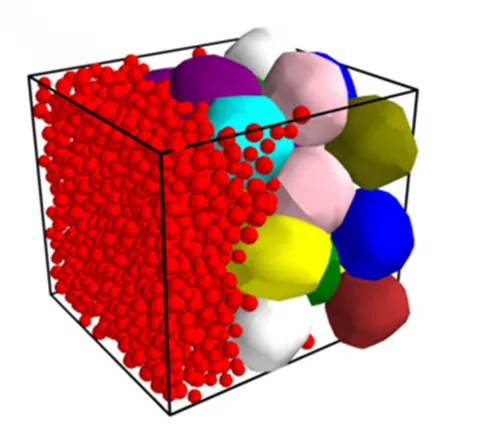A protein folding mystery solved
In living organisms, every protein – a type of biological polymer consisting of hundreds of amino acids – carries out specific functions, such as catalysis, molecule transport, or DNA repair. To perform these functions, they must fold up into specific shapes. It’s a complex process that’s critical to life, and despite advances in the field, there remain many open questions about the process. A new study published in PRX Life sheds some light on this issue, and could lead to new ways to design proteins for drug therapeutics, novel biomaterials, and other applications.
The researchers, led by Corey O’Hern, developed computational models for all globular proteins in the Protein Data Bank, an online database, and measured their interior core regions to determine how densely packed they were. Every protein had a core packing fraction of 55 percent. That is, 55 percent of the space was occupied by atoms. That led the research team to two questions.
“Why did they all have the same value? And, specifically, why is the value 55 percent?” said O’Hern, professor of mechanical engineering, materials science, physics, and applied physics. “The answer seems to be that the packing fraction stops increasing when the protein cores jam or rigidify.”

“Why did they all have the same value? And, specifically, why is the value 55 percent? The answer seems to be that the packing fraction stops increasing when the protein cores jam or rigidify.
Corey O'Hern
Professor of Mechanical Engineering, Materials Science, Physics & Applied Physics
That is, the individual amino acids that make up the protein core couldn’t compress any further when the protein folded. The packing fraction at which objects jam together depends largely on their shape. Spherical objects, for instance, jam at a packing fraction of 64 percent.
“But amino acids have complex shapes,” O’Hern said. “A few of the amino acids are fairly spherical, but most of them are elongated due to the side chains - and rough, due to all of the bonded hydrogen atoms. The physics of soft matter tells us that jammed packings of elongated, bumpy particles are not as densely packed as jammed packings of smooth, spherical particles, which explains the low value of 55 percent.”
An interesting future direction is whether the protein core packing fraction can become denser than what is found for proteins under physiological conditions. For example, there have been studies of proteins of at high pressures, mimicking the pressures in deep ocean hydrothermal vents, which are possibly connected to the original synthesis of organic molecules. Structural characterization of proteins at high pressures have shown that the protein core packing fraction can increase to 58-60 percent. Thus, this research is also related to our understanding of the origins of life.
“Now that we know the properties of protein cores under typical folding conditions, it's possible that protein core packing does not need to stop at 55 percent,” said Alex Grigas, a PhD candidate in O’Hern’s lab and lead author of the paper. “If you change the solvent conditions, pressure, or temperature jump, you may be able to get the amino acids to pack more efficiently.”
O’Hern added that protein design is currently focused on creating new sequences of amino acids to engineer new protein structures and functions.
“Now, this work opens the possibility that even with the same amino acid sequence, you can design new protein structures and functions simply by changing the folding conditions.”
More Details
Published Date
Mar 26, 2025


